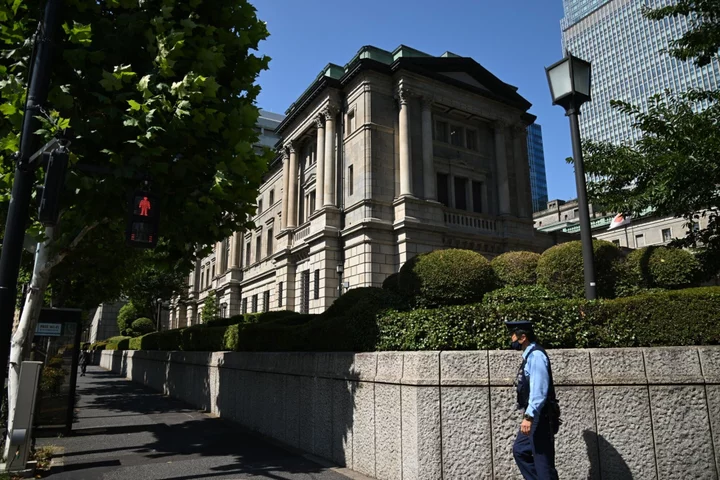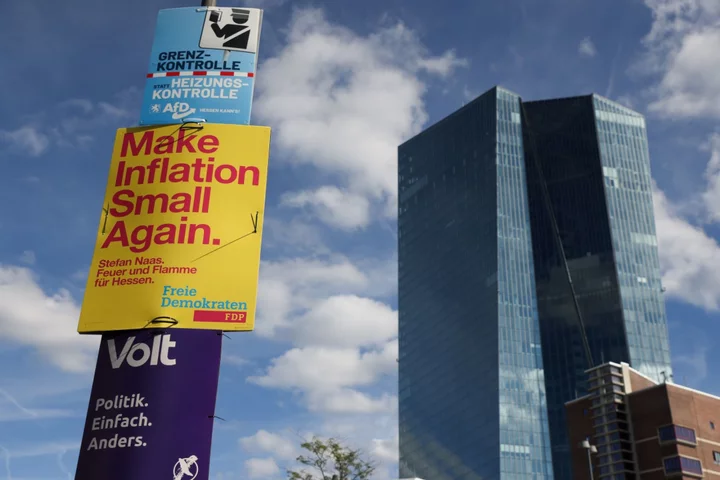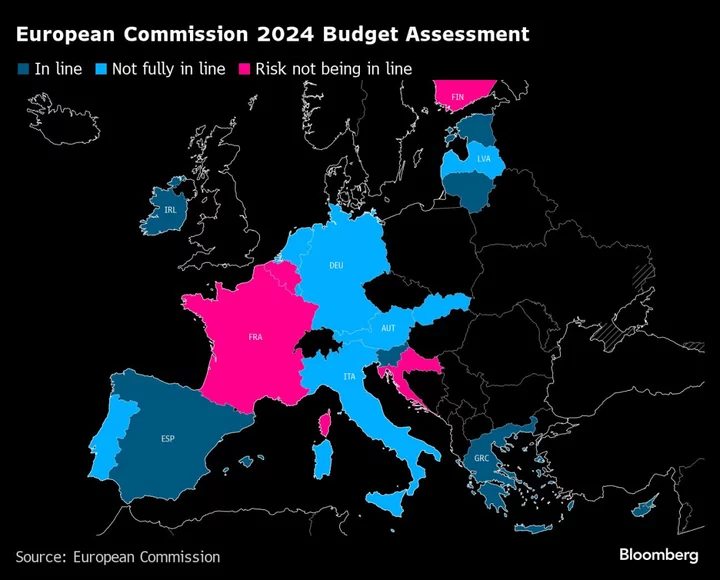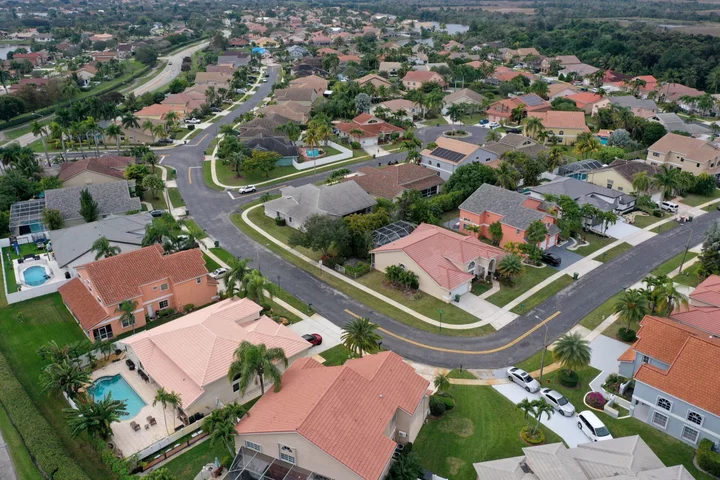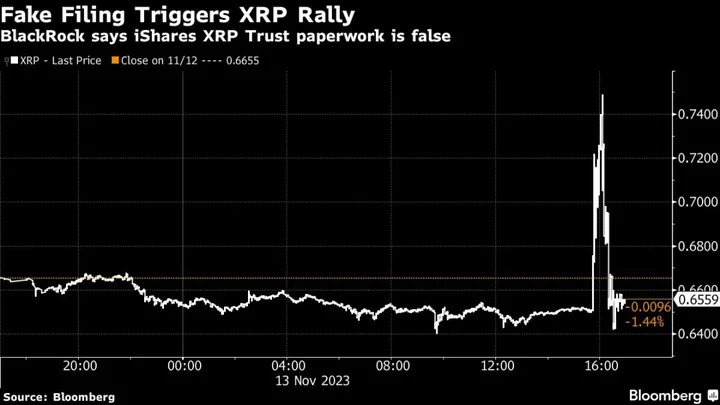Bank of Japan board members discussed progress toward their inflation target and the need to put together an exit strategy, according to a summary of views from the September policy meeting that will likely fuel expectations of change to come.
“Japan’s economy is getting closer to achieving the price stability target, although there is somewhat of a distance to go,” one board member said at the gathering, according to the summary released Monday. “Therefore, the second half of fiscal 2023 will be an important period for determining whether the price stability target will be achieved.”
The comments are likely to strengthen expectations among BOJ watchers that the central bank will adjust policy in early 2024 and that the BOJ is already giving early signals of the likelihood of exiting its ultra-easy policy.
In a Bloomberg survey ahead of the September meeting, half of polled economists forecast the end of the BOJ’s negative interest rate in the first half of 2024. The central bank left all its policy settings unchanged at the meeting.
Some board members flagged the risk of inflation deviating above their baseline scenario. Those remarks point to the likelihood of another upward revision in BOJ’s quarterly outlook report later this month. Another revision higher in the price outlook could be used to support further policy tweaks including a scrapping its yield curve control program this month, according to some economists.
One member, likely Naoki Tamura one of the board’s most hawkish members, said the 2% inflation target is “clearly” in sight, adding that the bank may be able to judge if it has been attained around the first three months of next year.
“It is important from a risk management perspective to prepare and lay the groundwork for an exit from the current monetary policy,” the same member said. The groundwork includes improving market functioning and communicating with market participants and the general public, the member added. The summary doesn’t specify who made each comment.
The release of the summary follows a speech Saturday by Governor Kazuo Ueda in which he said the size of the BOJ’s balance sheet would not impede policy changes such as an exit. While the governor said there was still some distance to the target, the speech fits in with a picture of the BOJ starting to tentatively pave the way toward a departure from its massive stimulus program.
Leading up to the Sept. 21-22 policy meeting, Ueda ignited talk of a possible near-term ending of the negative rate in an interview with local media. But his dovish messaging after the stand-pat decision and at a speech three days later indicated that he wanted to temper speculation of an early move.
Wage gains are among the data points to watch during the remainder of this year and early next year. The BOJ has repeatedly pointed to the importance of sustainable wage growth for achieving its inflation goal.
The stance of Japan’s biggest union group on next year’s pay demands will become clear in the coming weeks while the initial results of spring wage talks will be announced in mid-March after a series of announcements from major companies.
Given market’s projections of higher inflation and the government’s decision to rise minimum wages further, “it is quite possible that the wage growth rate next year will exceed that for this year,” one member said.

